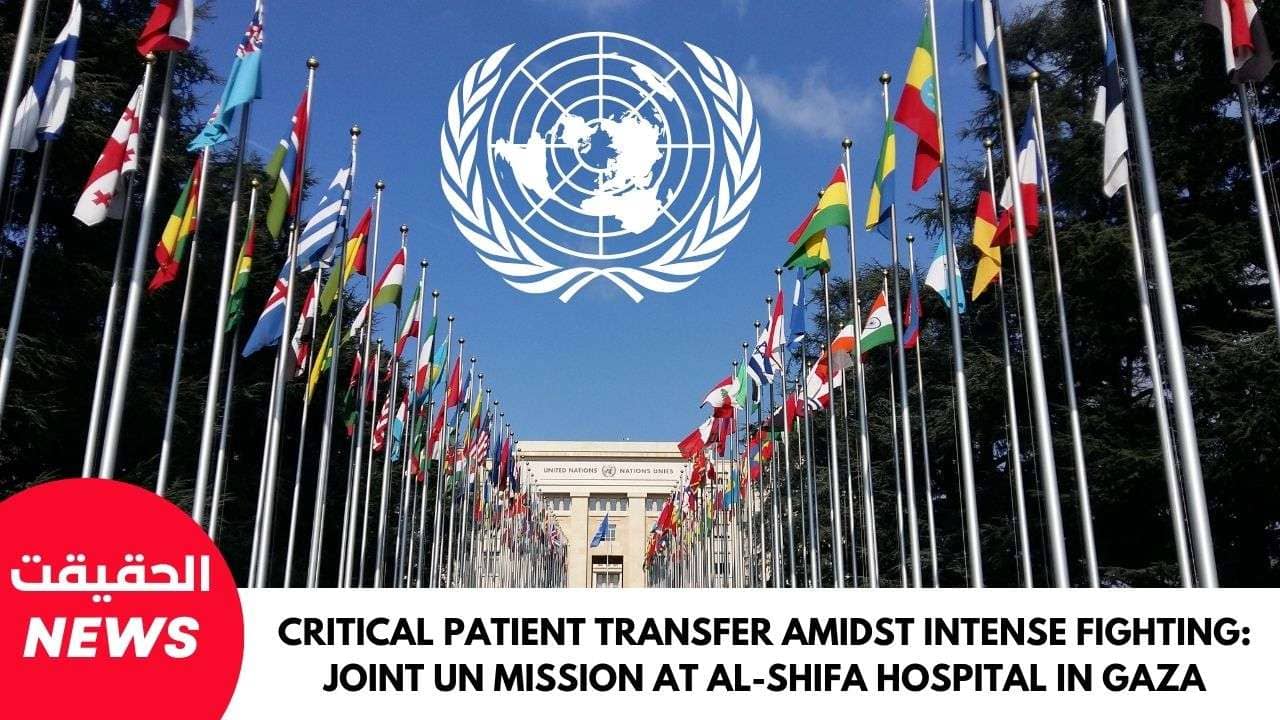Evacuation Mission in Gaza: WHO and Palestine Red Crescent Society Collaboration
On the 22nd of November, a collaborative effort between the World Health Organization (WHO) and the Palestine Red Crescent Society unfolded in a joint UN mission. This initiative aimed to transfer a total of 151 individuals, comprising patients, their relatives, and accompanying health workers, from Al-Shifa hospital in northern Gaza. This mission became imperative following specific requests from health authorities and hospital officials in Gaza.
Remarkably, this marked the third mission to Al-Shifa within less than a week. The preceding endeavors included an assessment mission on the 18th of November and an evacuation mission to transport 31 infants on the 19th of November. The urgency of these missions underscores the critical healthcare situation in the region.
The latest mission involved the transfer of 73 severely ill or injured patients, presenting a diverse range of medical conditions. This included 18 dialysis patients, 26 patients with serious spinal injuries, 8 patients with severe chronic conditions, two in need of critical care, and 19 patients in wheelchairs. The transfer was executed through 14 ambulances provided and staffed by the Palestine Red Crescent Society, along with two buses. Accompanying the patients were 8 health workers and 70 family members.
The mission unfolded under precarious conditions as intense fighting and shelling persisted in the proximity of Al-Shifa hospital. Despite the challenges, the team worked diligently for 20 hours to complete the evacuation. This duration included a significant 6-hour checkpoint screening conducted by the Israeli Defense Force, contrary to an initial agreement to screen participants at the origination point in Al-Shifa Hospital.
The screening process encompassed thorough checks on the patients, their relatives, and the accompanying personnel, encompassing elderly individuals and children, as well as severely ill patients. Regrettably, three medical personnel from the Palestine Red Crescent Society and three from the Ministry of Health were detained during this process.
After the prolonged screening delay, the convoy proceeded, recognizing the deteriorating condition of some patients. The patients eventually reached their final destination late at night. Most of them were transferred to the European Gaza Hospital, with dialysis patients admitted to Al Najjar Hospital, both situated in the south of Gaza.
WHO expresses profound concern about the safety of an estimated 100 patients and health workers who remain at Al-Shifa. Limited time within the hospital and the urgency of moving the most critical cases made it challenging to ascertain the exact number remaining.
Of the six health workers detained, there are reports that two have been released, but there is no information regarding the well-being of the remaining four, including the director of Al-Shifa hospital. WHO fervently calls for the full observation of their legal and human rights during their detention.
These evacuation efforts, including the one detailed above, were prompted by requests from health authorities, health workers, and patients. Al-Shifa Hospital’s inability to function due to a lack of essential resources, compounded by recent military incursions, necessitated these actions.
On the 21st of November, another mission was undertaken by WHO and partners to Al-Ahli Hospital in northern Gaza to assess medical priorities. Al-Ahli, being one of the few functional hospitals in the north, urgently requires a consistent supply of fuel, water, food, and medical resources to ensure the continuity of care. In a subsequent transfer mission with the Palestine Red Crescent Society, 22 patients, accompanied by 19 companions, arrived at the European Gaza Hospital.
In the face of these challenging circumstances, WHO reiterates its call for all relevant authorities to ensure the safe progression of medical evacuations. WHO emphasizes the need for these evacuations to proceed according to agreed procedures, with the paramount goal of not endangering the lives of patients. Ultimately, safety, security, and evacuation decisions rest with the relevant authorities.




